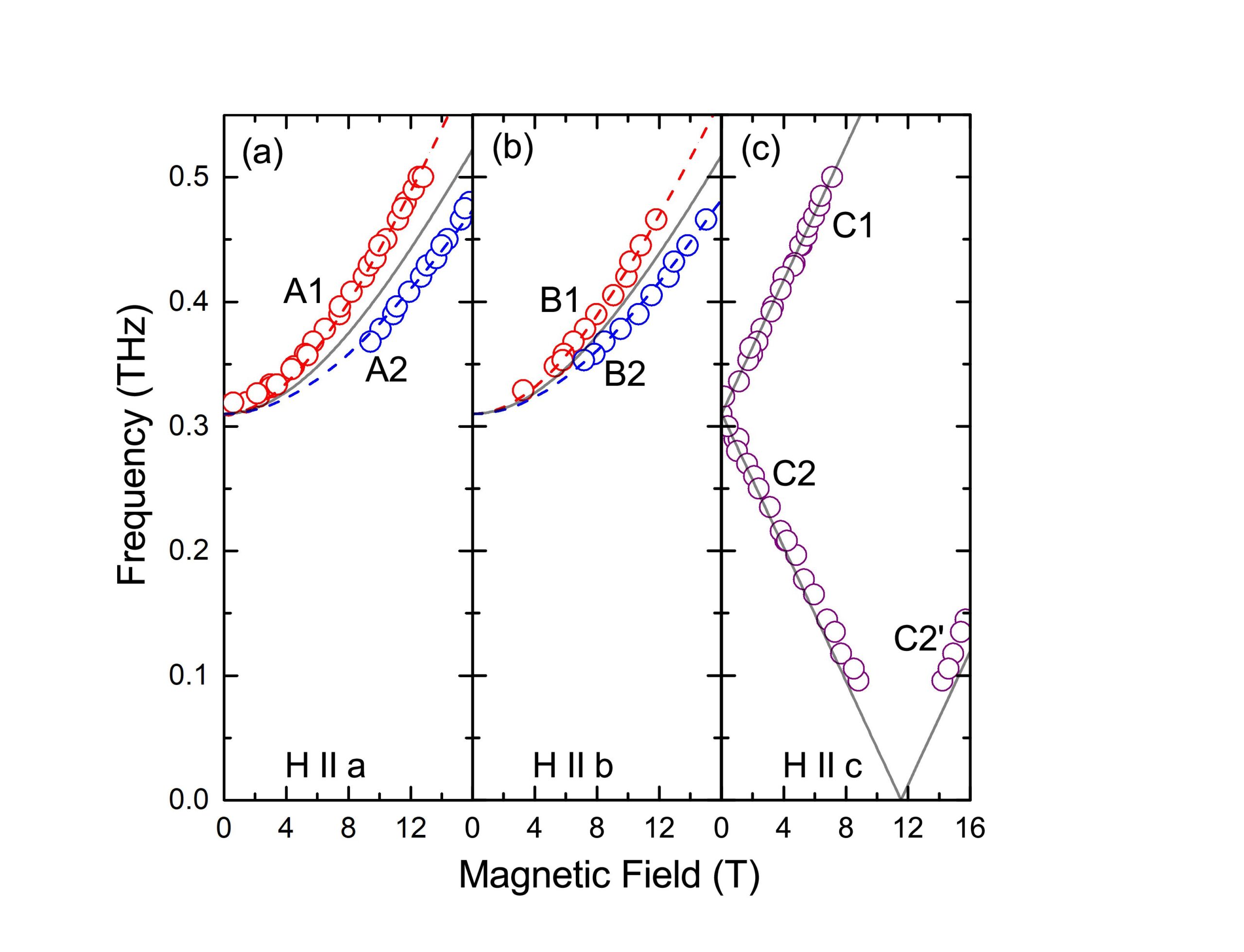Sergei Zvyagin, HLD Dresden.
Antiferromagnetic materials with spin 1/2 and triangular-lattice structures are in the focus of modern quantum physics, in particular, in connection with Anderson’s idea of “resonating valence bond” states in frustrated spin systems. He proposed that the ground state could be a two dimensional (2D) fluid of resonating spin-singlet pairs, with the elementary excitation spectrum formed by fractionalized mobile quasiparticles, so-called spinons. On the other hand, in spite of the 2D structure, magnetic correlations in such materials can have a pure 1D character, with the excitation spectrum also formed by spinons. This phenomenon is known as frustration-induced dimensional reduction. This was first observed in the triangular-lattice antiferromagnet Cs2CuCl4. Investigating the spin dynamics and ground-state properties of such systems is of prime interest in frustrated magnetism, both from experimental and theoretical points of view. Ca3ReO5Cl2 (CROC hereafter) is the second material, where a frustration-induced dimensional reduction was revealed. We performed high-field electron spin resonance (ESR) spectroscopy and magnetization studies, allowing us not only to refine the spin-Hamiltonian parameters, but also to investigate peculiarities of the spin dynamics and magnetic properties in a broad range of frequencies and fields, relevant to the energy scale of magnetic interactions in this new frustrated spin system. Based on our ESR results and model calculations for a triangularlattice antiferromagnet with reduced dimensionality (Figure 1), we conclude that the presence of uniform Dzyaloshinskii-Moriya interaction (DMI) shifts the spinon continuum in momentum space. As a result, a zero-field gap opens that we observed directly. Pulsed-field magnetization measurements of CROC powder up to 120 T revealed a saturation field of 83.6 T (Figure 2). We used this value to calculate the interchain exchange interaction. Based on our observations, we suggest that a pure DMI-spiral state can be realized in CROC, making this material an attractive toy model to explore details of the dimensional reduction and other effects of the geometrical frustration in low-dimensional spin systems with competing interactions. This work was done in collaboration between the HLD and the Institute for Solid State Physics, University of Tokyo.
Figure 1 Figure 2
Figure 2 
Figure 1: Frequency-field diagrams of magnetic excitations at 2 K in CROC with fields applied along the (a) a, (b) b, and (c) c axis. The solid lines are results of model calculations for a triangular-lattice antiferromagnet with reduced dimensionality and uniform DMI.
Figure 2: Magnetization of a CROC powder sample in magnetic fields up to 120 T, obtained using a pulsed single-turn magnet (initial temperature is 5 K). The inset shows the derivative of the as-measured magnetization M.
Dimensional reduction and incommensurate dynamic correlations in the S = 1/2 triangular-lattice antiferromagnet Ca3ReO5Cl2, S. A. Zvyagin, A. N. Ponomaryov, J. Wosnitza, D. Hirai, Z. Hiroi, M. Gen, Y. Kohama, A. Matsuo, Y. H. Matsuda, and K. Kindo, Nat. Commun. 13, 6310 (2022).
Contact: S.Zvyagin@hzdr.de






